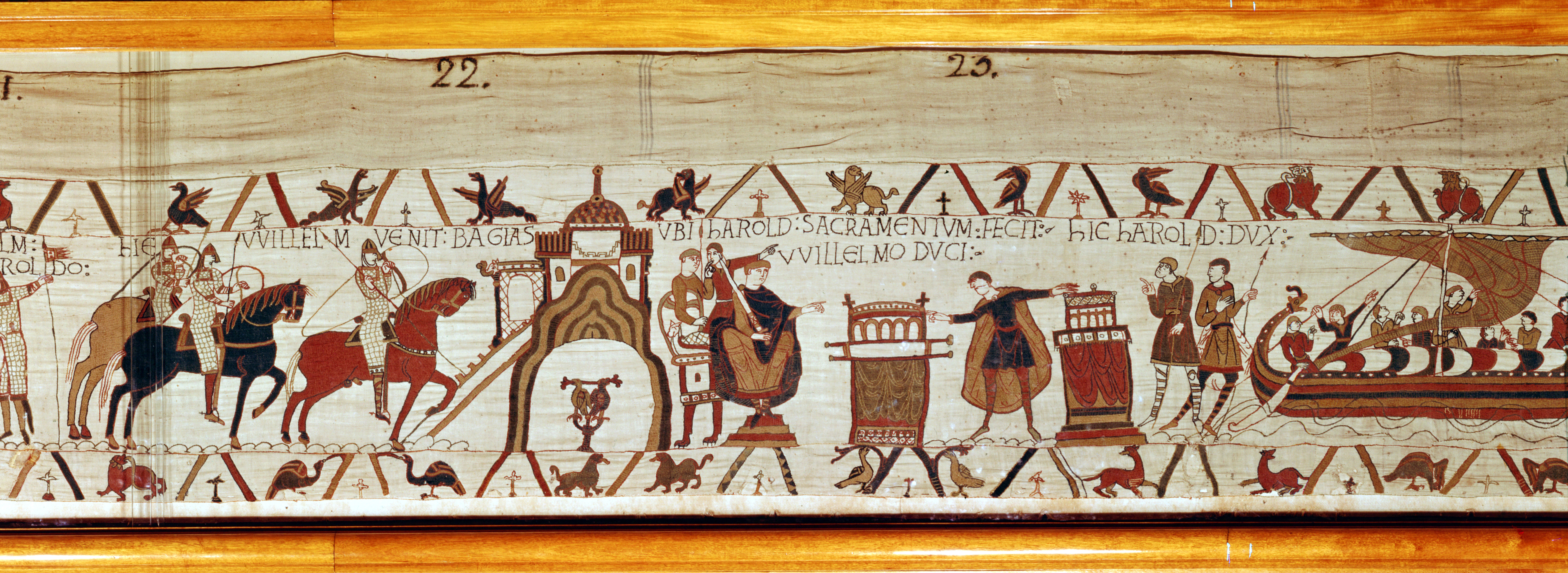Battle is a small market town with a very large History. It was here in 1066 that The Battle of Hastings changed the face of England. 14 miles from Rye.
BATTLE
Battle is a small market town with a very large History. It was here in 1066 that The Battle of Hastings changed the face of England. At the centre of the town is Battle Abbey, its Gatehouse entrance, rebuilt in 1338, is one of the finest monastic structures in Britain. At eventide it is suffused in a golden glow as the setting sun, projected from the far end of the High Street, strikes its yellow sandstone. The Normans established the Abbey on the site of their victory over Harold in 1066; it was their usual way of showing authority over a conquered people, but it was also built, by order of the Pope, as a penance because they had killed so many people in the battle. Completed after the death of William, in the reign of his son King Rufus, it was dedicated to St. Martin in 1095. After Henry V111’s Dissolution of the Monasteries, which took place between 1536 and 1541, the Abbey passed into private hands. Apart from the Gatehouse, very little now remains of the rest of its buildings. After the First World War, the surviving cloisters were leased to Battle Abbey School who still hold these buildings today. The Abbey grounds are home to a new restaurant and visitor centre under the care of English Heritage.
Of course a great deal has been written about the event that took place on this site close to a thousand years ago. It is for this reason that a notable scholar pointed out that most of the written history is, perhaps, inversely proportional to the actual known facts. What we can say with certainty is that a single battle between a few thousand men on October 14th 1066 changed the course of English and European history forever.
The Battle Museum, The Almonry, stands at the junction of Mount Street and the High Street. The only relic of the battle, an eleventh century battle axe, is kept here with a number of engravings depicting the Bayeux Tapestry. The ‘tapestry’ is not woven as the name suggests but embroidered with woollen yarn onto seventy metres of linen. It shows in graphic detail events leading up to the invasion, and the battle that lead to the Norman Conquest of England. Legend has it that it was made by William the Conqueror’s wife, but it is thought to have been commissioned by Bishop Odo of Bayeux, William’s half brother, and made in England by monks. While there is an embroidered replica in the Museum of Reading - the original can be seen, wonderfully displayed, in the Musee de la Tapisserie in Bayeux, Normandy. 
The sounds of battle may be long gone but the French language is heard daily as groups of French school children come here all year round, to experience and enjoy the site of one of their country’s greatest triumphs. However, if they were to find themselves on the corner of Mount Street in November, as close as possible to the 5th, they would be forgiven for thinking another battle was about to break out. For the ‘Battle Bonfire Boyes’ dressed in menacing, androgynous garb assemble at this junction to go ‘tippling’ between the ‘Bull’, a seventeenth century coaching inn, and the fifteenth century ‘Ye Olde Kings Head’. In Saxon times, on the eve of Samhain, (the Celtic New Year on the first of November) the youngsters put on strange disguises and ran about pretending to be spirits returning from the dead, and playing tricks on people. Each settlement lit one huge bonfire, doors were left open and food and drink put out for dead ancestors while carved turnips were put outside the dwellings to ward off evil spirits.
Today
Nowadays this old winter festival has more to do with an event which happened in 1605. On November 5th of that year Guy Fawkes was discovered “catched with a match” in the cellar of the House of Lords while preparing to blow up the King and Members of Parliament. The thirty six barrels of gunpowder he and his fellow conspirators had hidden there is said to have come from the mills around Battle. Since 1686 the ‘Battle Bonfire Boyes’ (including women and children) let off steam by parading an effigy of Guy Fawkes down the High Street to The Green in front of the Abbey Gates. An enormous bonfire crackles amidst the thunderous noise of metal braziers full of burning coals being dragged along the ground accompanied by the heartbeat rhythm of military drums.
On calmer days Mount Street has the air of a rural community. The cottages, houses and many of the shops are clad with immaculately painted weatherboarding. From the car park which is situated between this street and Old Ladies’ Court there are widespread views over great swathes of woodland that lie towards the south east.
Hamlets and Villages near Battle:
Nestling in this hinterland south of the Brede Levels, are hamlets, market gardens, vineyards and the picturesque villages of Guestling, Pett, Westfield, Brede and Icklesham
Transport :
Battle railway station – the line goes to Hastings and up to London via Tunbridge Wells and Sevenoaks into Charing Cross.
http://www.battlesussex.co.uk/